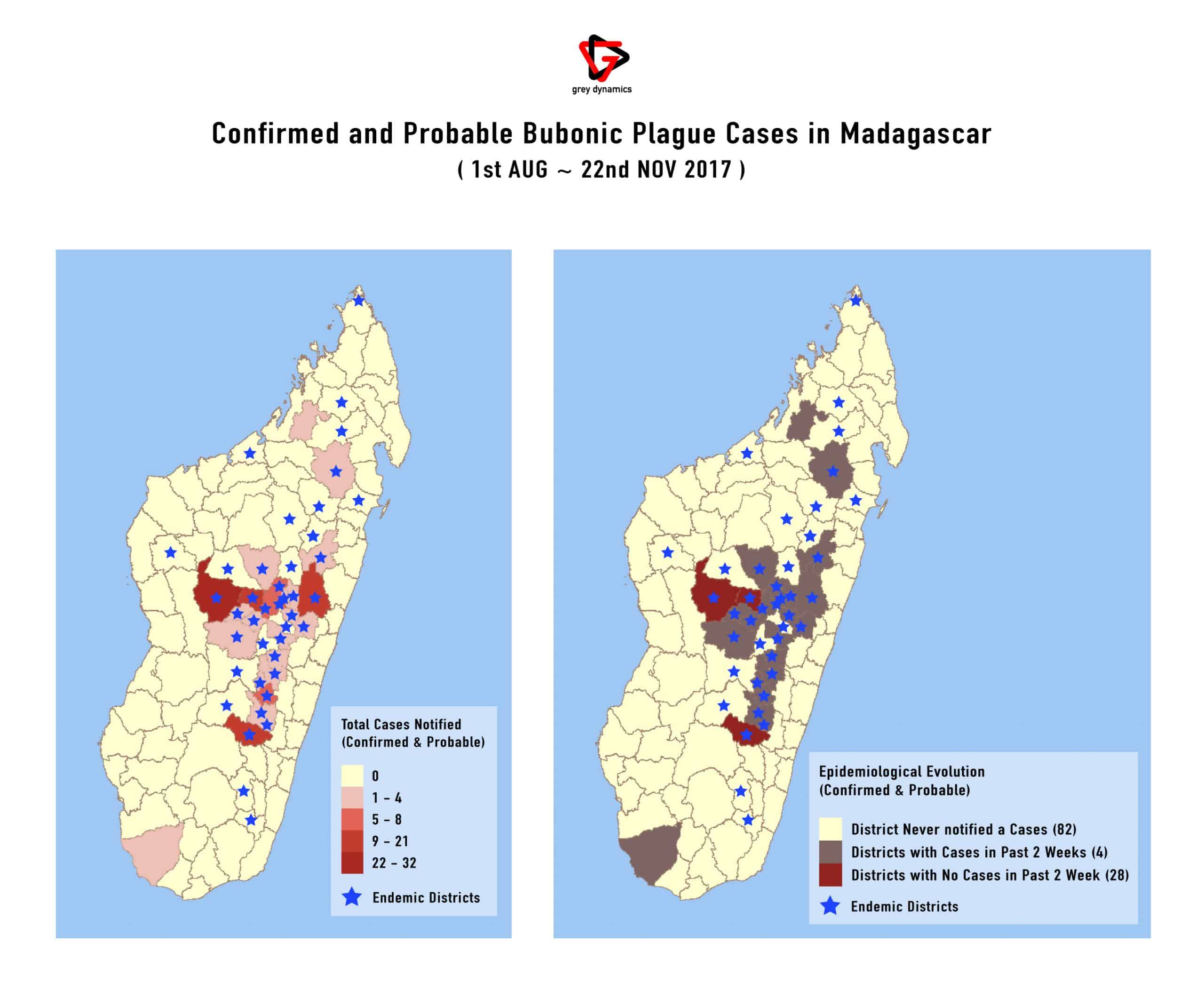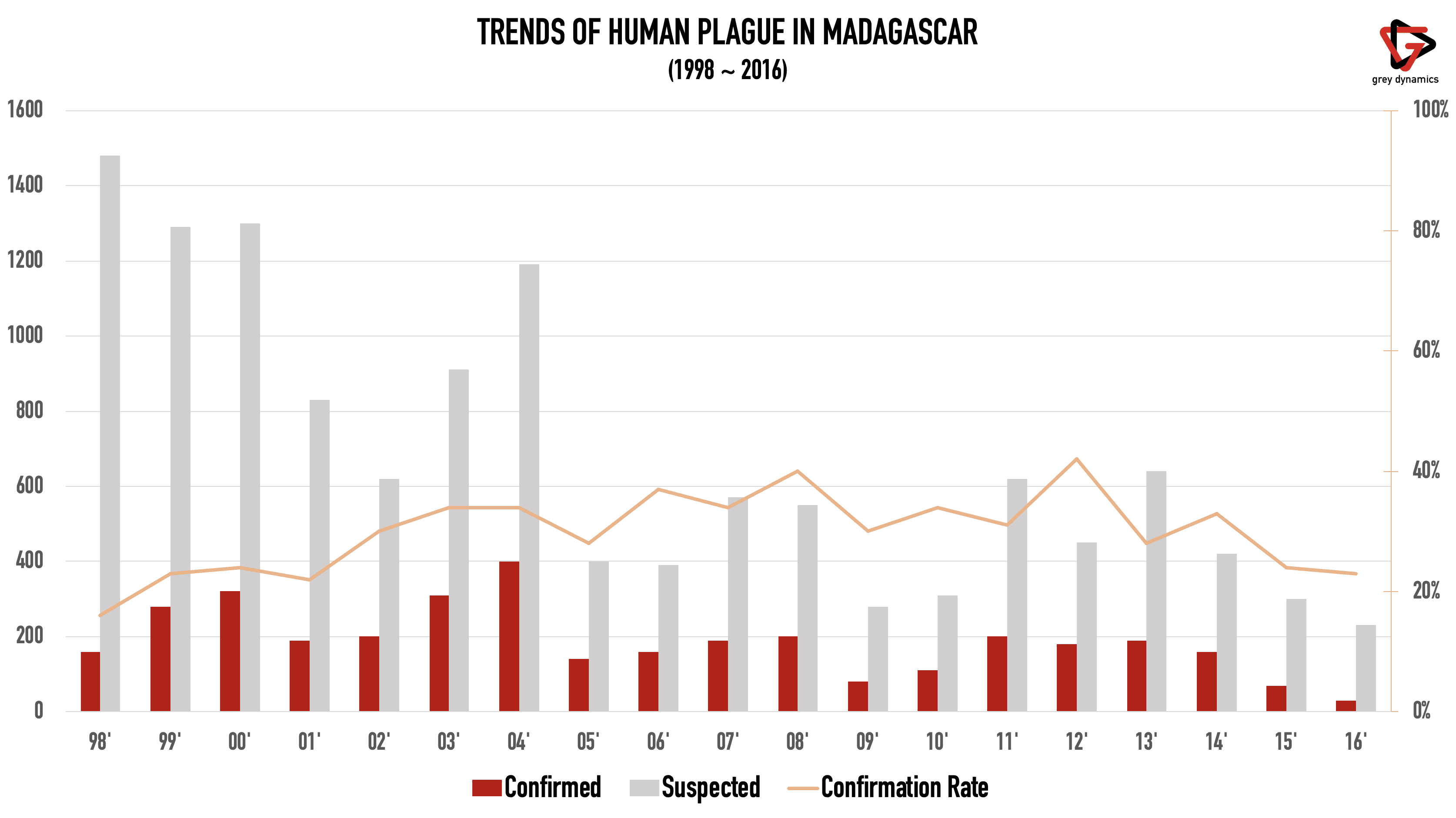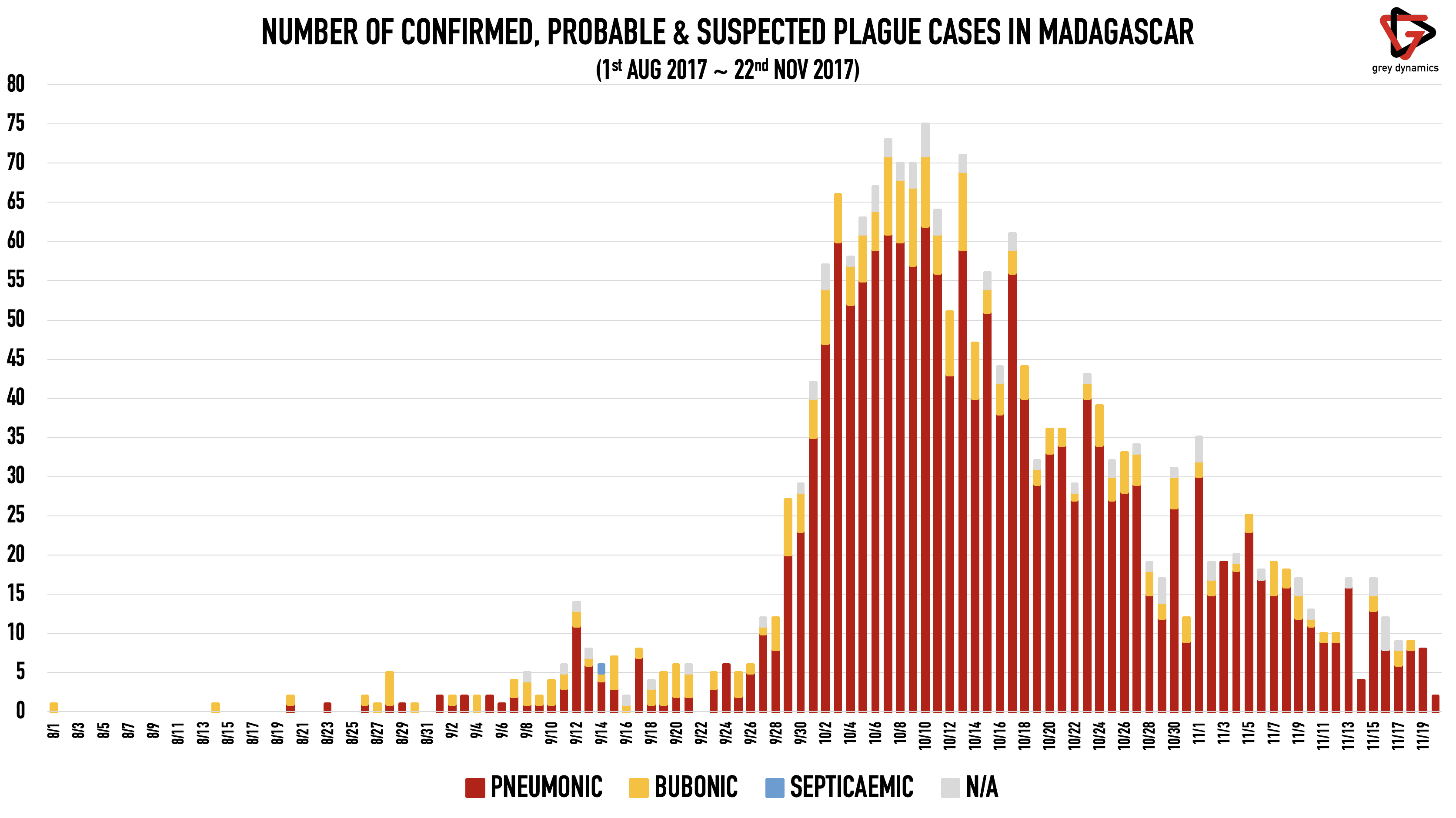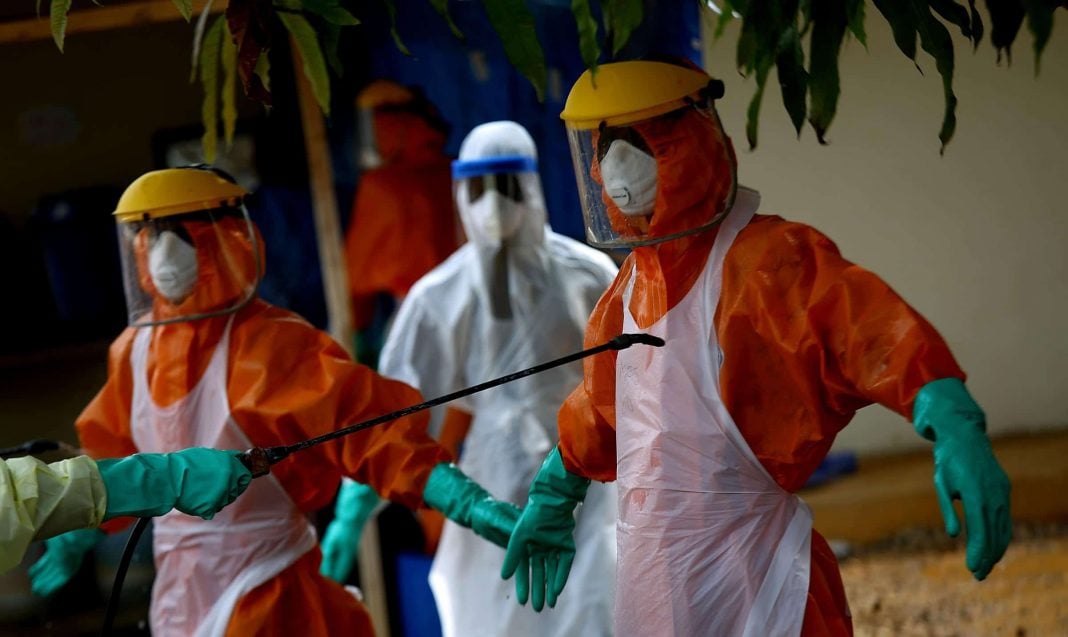Since October 2017, nearly 1,000 people have died, and over 66,000 have been infected from a measles epidemic in Madagascar. In 2017-18, the country was devastated by the plague, infecting nearly 2,000 people and killing over 200. The country experiences regular outbreaks, with an estimated 400 plague cases each year. Experts described the outbreak of 2017-18 as the “worst outbreak in 50 years”. However, the case of measles is highly unusual. The last measles outbreak to hit Madagascar was in 2003-4. Why are these diseases such a threat in Madagascar now?
The Plague in 2019?
Over 50 million people in Europe during the Middle Ages died from the plague, known as the ‘Black Death’. Madagascar has suffered bubonic plague outbreaks almost every year since 1980. It is the country most seriously affected by the plague. Nonetheless, others, including the United States, Russia, China, Peru, Bolivia, and several African nations, regularly report cases. The disease is most prevalent in Madagascar in the hot, rainy season from September to April. It is often caused by rats fleeing forest fires. According to a UN estimate, between 300 and 600 infections are recorded annually in Madagascar.

Measles, Eradication Still Elusive
The vaccine is safe and cost-effective. Nonetheless, in 2017, there were 110,000 measles deaths globally, mostly among children under the age of five. Massive vaccination campaigns resulted in an 80% drop in measles deaths between 2000 and 2017 worldwide. Before the introduction of the measles vaccine in 1963 and its widespread, major epidemics occurred approximately. This happens every 2–3 years, and measles causes an estimated 2.6 million deaths each year.
Why Madagascar?
According to WHO, the “plague is a disease of poverty. It thrives in places with poor sanitary conditions and inadequate health services. It can kill quickly if left untreated, but can also be cured by antibiotics if delivered early”. In 2017, only 58% of the population had been vaccinated against measles. The lack of a significant outbreak since 2003 also led many not to develop immunity. Madagascar also has Africa’s highest children’s malnutrition rate, at 47%, which can increase the risk of severe complications and death from measles infection.
Madagascar is impoverished, with many people unable to afford basic expenses such as transportation to seek health services. The health system is poorly equipped to deal with these diseases and generally lacks doctors and other healthcare professionals. Particularly during the plague, staff lack basic protective garments to guard against infection, and the system is underprepared to handle the influx of samples for analysis promptly. The people’s response is to self-medicate, buying cheap medicines at shops rather than going to a hospital or clinic.

In 2017-18, the plague spread so rapidly that infected patients began to escape from hospitals by the thousands and return to their homes. Most of them would rather self-medicate than entrust their lives to local doctors. Generally, the outbreak caused panic, with reports of people buying antibiotics from drugstores, unaware whether they were getting the correct drug.

The National and International Response Just a Bandaid?
The Ministry of Public Health of Madagascar coordinated the response to the plague with the support of WHO and other agencies, stakeholders, and partners. The Ministry of Public Health of Madagascar activated crisis units in Antananarivo and Toamasina to coordinate the outbreak response efforts. The international response was assembled to support the Madagascar Ministry of Public Health, with contributions from the UK Public Health Rapid Support Team, WHO, the US Centers for Disease Control (CDC), and Doctors without Borders. WHO delivered more than 1.2 million doses of antibiotics and released $1.5 million in emergency funds. The Red Cross released over $1 million to deploy a treatment centre and has mobilized over 1,000 volunteers.
Since notice of the measles outbreak, the WHO spearheaded an emergency response and has so far vaccinated 2.2 million of the 26 million population. Additionally, the Ministry of Public Health is coordinating other responses with the WHO, USAID and UNICEF, such as community mobilization awareness campaigns, enhancement of active surveillance, and activation of the hotline for information sharing on measles, formerly used during the 2017-18 plague epidemic.
Dark Days to Come?
These outbreaks are doomed to repeat themselves if adequate steps are not taken to address its root causes; an inadequately equipped health system, poor infrastructure, and high poverty levels. According to Dr. Tedros, Director-General of the WHO, the larger-than-usual plague outbreak had helped spread the bacteria that causes the plague more widely. Combined with poor sanitation and vector control, it meant that “when the plague comes again, it starts from more stock, and the magnitude in the next transmission could be higher than the one we saw”. The return of measles and the growing threat of the plague could exemplify a disturbing trend in years to come.

